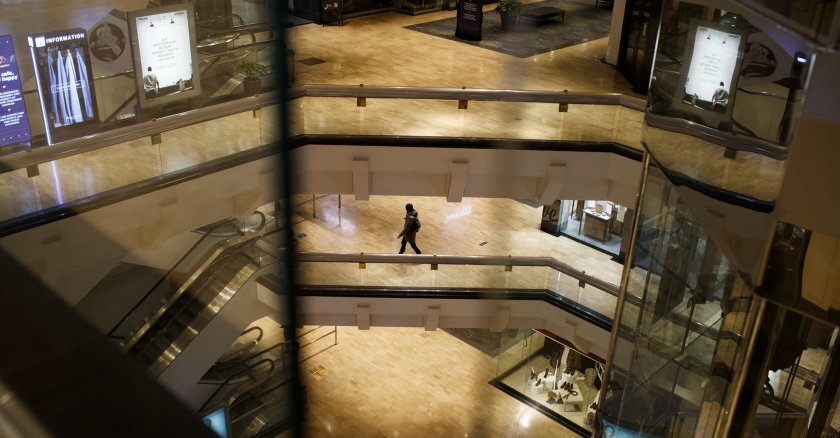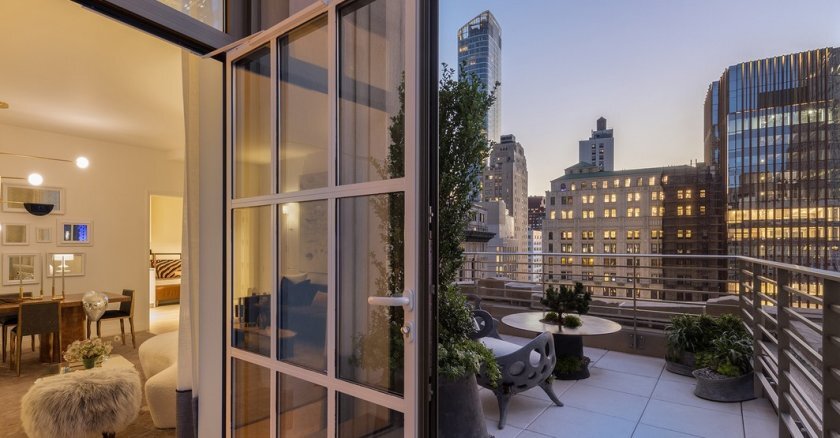In most cities, downtown retail commerce is stagnant, but in some notable cases the downtown residential population is increasing even as the city as a whole and the broader metro population are shrinking. In some of those places, center-city residents are choosing to live near their place of work while going to it only on a part-time basis. It’s important — albeit difficult — to try to make some sense of why these and other evolutions are taking place.
Maybe it will be helpful to look back before we look forward, and to take note of how downtowns in America and the rest of the developed world have reinvented themselves over the past century and a half.
We tend to conceptualize downtowns as the entities we remember from our early years, but in fact they are remarkably protean institutions. Until the late 19th century, western cities had compact downtowns in which people both lived and worked. If you ran a counting house in London, or baked hot cross buns, or sold linens, the odds were that you lived up the stairs from your place of business. That cozy arrangement was broken up for the middle class in London with the passage of the Cheap Trains Act of 1883, which made it feasible to have a small cottage in the suburbs and commute to the city every morning. The cottages weren’t universally popular — H.G. Wells called them “a bright fungoid growth in the ditch” — but they changed the character of downtowns in London and later in other cities as well.
By the 1920s, American social scientists were laying out diagrams of what took place downtown and what happened further away. Downtown remained the center of culture and commercial activity, but it was encircled by a factory district just beyond it and by increasingly affluent neighborhoods for downtown workers 10 or 15 miles from the center. All this was made possible, of course, by the ubiquity of the automobile, which by the end of the '20s had evolved from a luxury good to a common possession of the middle class.
The rest of the evolutionary process doesn’t require much elaboration. The Interstate Highway System made commuting from ever-more-distant suburbs an ordinary metropolitan experience, and eventually retail commerce moved out to the suburbs as well, leaving downtowns as office employment centers but very little else — places that were deserted and depressing once the workday ended. This is the downtown that many of us remember from our childhoods. It’s nothing to be especially fond of, but it reflects a major epoch in the history of city centers. Suburbanites complained endlessly about long rush-hour commutes through gridlock on overcrowded freeways, but they endured them.
The 21st century launched another era, at least in our largest cities, with previously empty downtowns reborn as dining and entertainment enclaves, and increasing numbers of young singles and couples deciding that they wanted to live their lives near the urban center.
Then came COVID-19, and still another era began. As shutdowns and working from home took hold, Seattle, which had had 200,000 commuters pouring into its city center, was suddenly drawing less than half that many. Fewer workers meant less commercial revenue. It was estimated that the first year of COVID-19 generated a 39 percent decline in Manhattan‘s office value; nationwide, it was estimated that the pandemic resulted in the destruction of $413 billion in the value of downtown districts. Restaurants that catered to downtown office workers at lunchtime shut their doors for good.
IT SOON BECAME COMMON to describe this process as a “doom loop”: fewer workers, less revenue for the commercial sector in general. But some downtowns, in diverse parts of the country, have returned to or are coming close to the level of activity that existed in 2019. San Diego and Salt Lake City are back to what we used to call normal. The demographer Richard Florida has concluded that nearly every urban downtown is coming back — except for its retail sector. That’s a whole different issue.

But here’s the interesting thing: Chicago’s downtown residential population has been going up in the years since the pandemic arrived. The downtown area now has an estimated 46,000 residents, 10 percent more than it had in 2020. More than 90 percent of the residential units are said to be occupied. The fashion boutiques and high-end kitchenware stores may be suffering, but there is a line at Starbucks nearly all the time. The iconic Tribune Tower, long home to the self-proclaimed World’s Greatest Newspaper, is now a condominium building.
Meanwhile, in New York City, something equally puzzling seems to be happening. Jonathan Miller, a prominent real estate appraiser, suggests that some affluent young professionals are choosing to live close to their offices — even as they work from home the bulk of the week. “Most of the Manhattan apartments we inspect,” Miller tweeted recently, “seem to have their occupants working remotely.”
A FEW ANECDOTES DON’T WARRANT A FIRM CONCLUSION, but it seems fair to speculate that something meaningful is happening, perhaps not to the average millennial or to Gen Z youth, but to a significant number of people. Many who can afford it want to work from home at least a few days a week, but they also want to live in a dense urban environment with coffeehouses and high-end restaurants a short walk from their front door. They can have both of those goods if they choose to.
That still isn’t a blessing for much of the retail sector. The Stanford economist Nicholas Bloom, who spends much of his time studying this situation, reports that the most common preference of office workers is to operate from home three days a week and to come to the office the other two, often Tuesdays and Thursdays. He also believes this happens to be the schedule that currently works best for employee productivity. Bloom posits that the share of Americans working at home, which was less than 5 percent before COVID-19 and rose to as much as 50 percent in some places in the early pandemic months, will eventually settle down at around 20 percent. If you run a downtown business, that’s a little better.
But with the exception of Starbucks, fine dining restaurants and a few boutique shopping destinations, it will leave a hole in the downtown world. A café that used to depend on lunch traffic will have a hard time surviving on a pattern of offices occupied only three days a week. This is the picture that downtown businesses and urban planners are most likely to confront in the near future.
The most obvious answer is the conversion of massive amounts of office space into residential status. Washington, D.C., has one of the most ambitious plans. Mayor Muriel Bowser has declared a goal of creating 15,000 new downtown residences by 2028, converting 7 million square feet of offices. As an incentive, she is proposing 20 years of reduced taxes for developers, provided they make 15 percent of their units affordable and give 35 percent of the construction jobs to local contractors and workers.
This will be difficult. Most modern office buildings are notoriously hard to convert, with open floor plans that cannot be easily changed into apartments. Developers are already pushing back against the 35 percent threshold for contracting jobs. A quarter of the office space in downtown D.C. is owned by the federal government; that’s another issue that has to be dealt with.
Still, it’s hard not to conclude that Muriel Bowser and other similarly minded mayors have history on their side. That history tells us that when big-city downtowns stop serving one purpose, they do not self-destruct. They evolve to serve another one. The most likely scenario is that despite all the obstacles, we will see the evolution continue.
Related Content














